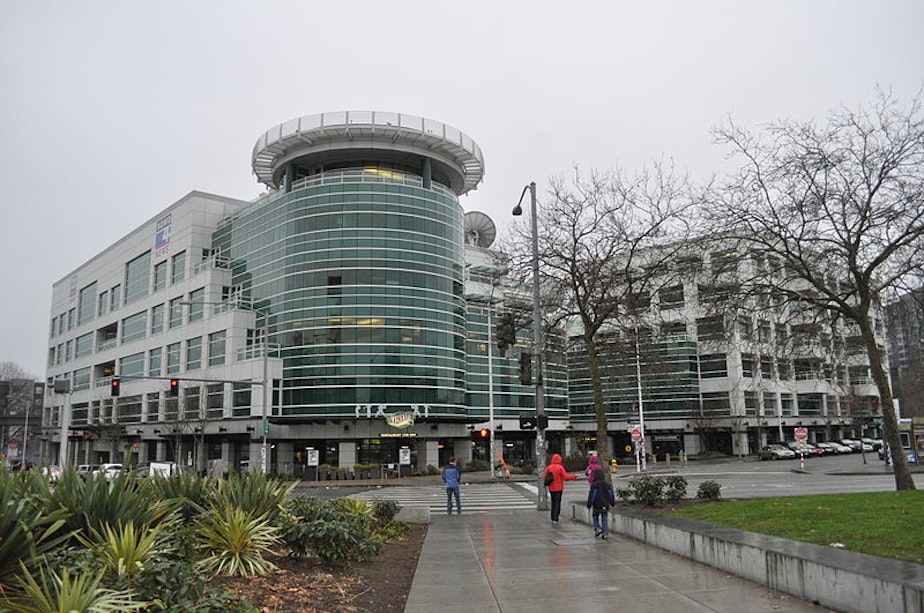The Night A Fire Silenced KOMO's Airwaves

On the night of Thursday, July 2, 2009, the 4th of July weekend was underway.
As the clock ticked past 11:30 pm, it was time for headlines on longtime Seattle radio station KOMO. Anchor Art Sanders was working his typical weeknight late shift on the all-news radio station.
He was broadcasting from a studio on the fourth floor of Fisher Plaza, a modern office building on Broad Street, across the street from the Space Needle. But as the newscast got underway, Sanders told the audience he was broadcasting in the dark, and it was clear that this night was going to be anything but typical.
Sanders and KOMO were broadcasting in the dark because a fire had broken out at Fisher Plaza, and the electricity in the building had been cut off. Generators had kicked in, but those, too, had shutdown. KOMO Radio was running on batteries. And now, the fire department was about to kick everybody out of the building, including Sanders, who was supposed to be talking on the radio.
Also on duty that night with Sanders was editor Ryan Harris. Harris also had to leave. But first, he had an idea. He went out to the sidewalk and called the studio on his cell phone. Sanders put Harris on the air, as if he was a caller on a talk radio show. Then, Sanders got himself out of the building while Harris handled the broadcast from outside. The cell phone became the microphone – the broadcaster’s only connection to the transmitter and the listeners.
Sponsored
From the parking lot, Harris told listeners that the KOMO team was going to do their best to stay on the air. Harris and Sanders kept KOMO on the air by cellphone past midnight and into early Friday morning. Meanwhile, the KOMO engineers were hatching a plan to create a temporary studio somewhere other than Fisher Plaza.
Around 12:30 a.m., Harris was forced to abruptly sign-off. The airwaves became silent. Silence from a radio station – even after midnight – is not something you hear much these days. It’s a little eerie, a little disconcerting. But less than two hours later, the silence was broken when Gary Burleigh came on the air.
“If you've been looking for us, we are back on the air,” Burleigh said. “But we're in strange confines.” KOMO Radio had relocated to makeshift quarters atop Queen Anne Hill in the KOMO TV transmitter shack.
Burleigh said it was like going back in a time capsule to the early days of radio history, and that it was fun for him and the rest of the KOMO crew.
And it was a treat for the listeners, too. There were no commercials. No national news breaks from ABC in New York. No sound effects heralding “traffic and weather together.” It was just human voices going into a microphone – from what the crew dubbed “Fort KOMO, Queen Anne” – and coming out of speakers all around Puget Sound.
Sponsored
Damage from the fire kept KOMO staff out of the building for most of that day. But this unusual broadcast offered listeners a rare glimpse into the earliest years of radio history.
Watch KUOW newscaster Lisa Brooks -- formerly of KOMO -- anchor from Queen Anne Hill:
